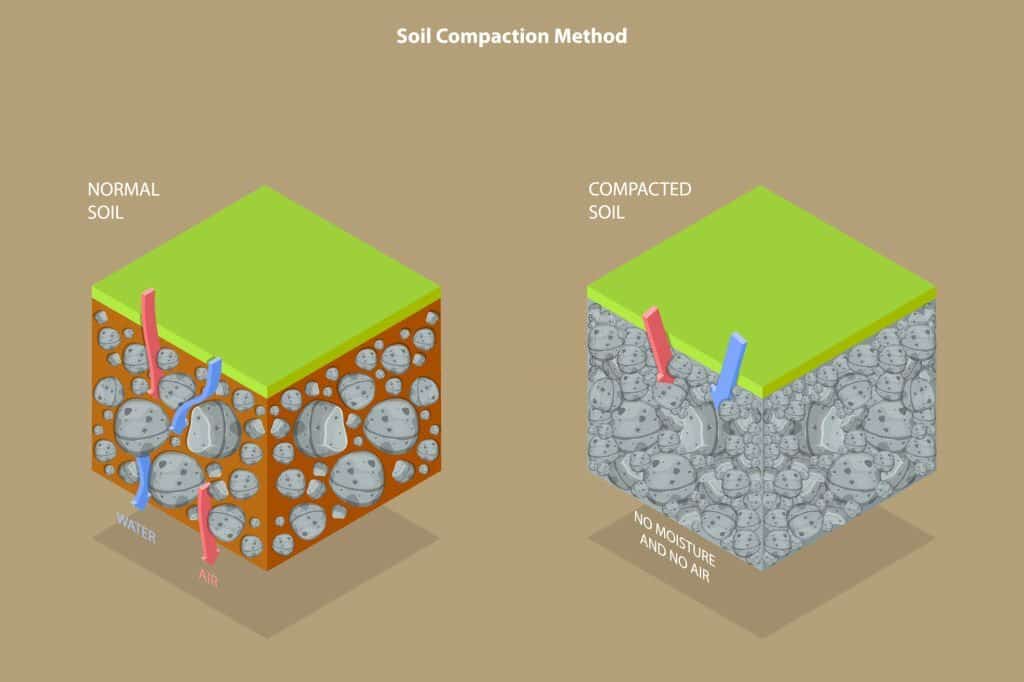
In the tranquil landscapes of Australia, our lawns often face an unnoticed adversary: soil compaction. This hidden menace, a consequence of routine activities like walking, mowing, and general use, can significantly impact the health of your lush green carpet. Let's delve into the intricacies of soil compaction and understand its implications for your lawn's vitality.
Compacted soil acts like a stifling barrier, hindering vital processes that are crucial for a healthy lawn. Reduced air circulation, impaired water absorption, and restricted root growth are the repercussions of this silent saboteur. The consequence? Thinning grass is an open invitation for weed infestations.
Understanding the common culprits behind soil compaction is the first step towards mitigating its effects. Everyday activities such as walking, playing, or the regular use of lawn machinery contribute to this issue. The relentless pressure exerted during these activities gradually compresses the soil particles, creating a dense and impenetrable layer.
To address soil compaction effectively, it's essential to recognise the signs of distress. Keep an eye out for areas where water tends to pool, indicating compromised drainage. Thinning grass, especially in high-traffic zones, and the persistence of certain weeds are additional red flags. A proactive approach involves observing your lawn's response to stress and taking preventive measures accordingly.
The key to reviving a compacted lawn lies in aeration. This process involves perforating the soil with small holes to facilitate improved air circulation, water absorption, and nutrient penetration. By introducing space into the compacted soil, aeration promotes robust root growth and overall turf health. Regular aeration is a fundamental practise to ensure your lawn breathes freely and thrives.
Understanding the intricacies of your soil composition is akin to deciphering a unique code. Different soils—sandy, loamy, or clayey—react distinctively to compaction. Sandy soils, for instance, may experience compaction differently than clayey ones. This knowledge becomes the compass guiding your approach to aeration and maintenance. Tailoring strategies based on your soil's composition ensures a targeted and effective solution to combat compaction.
The seasons have a significant influence on soil health. In Australia, where climates can be diverse, understanding the seasonal variations in soil compaction is crucial. Heavy rainfall, a common occurrence in certain seasons, can exacerbate compaction. Hence, observing your lawn post-rain becomes more than a routine—it transforms into a strategic intervention. Being mindful of these seasonal nuances empowers you to take timely actions to mitigate soil compaction risks.
Prevention often proves to be the best cure. Adopting preventive measures is akin to providing your lawn with a shield against compaction. Designating specific walkways or play areas strategically disperses pressure, preventing concentrated stress in particular regions. By thoughtfully planning your lawn's usage, you actively contribute to even pressure distribution, reducing the risk of soil compaction over time.
Aeration, though vital, is most effective when complemented by other lawn care practices. Integrating overseeding and fertilisation into your regimen creates a holistic approach to soil health. Overseeding helps replenish and strengthen the turf, while fertilisation provides essential nutrients for robust growth. This synergy ensures your lawn thrives, not merely surviving the threat of compaction but flourishing with vitality.
Weeds, often considered the unwelcome guests in your lawn, can also serve as indicators of soil health. Certain weed species thrive in compacted soil conditions. By monitoring weed growth patterns, you indirectly gauge the state of your soil. This vigilant observation becomes an invaluable tool in your arsenal, offering insights into potential compaction issues that may be lurking beneath the surface.
When faced with persistent issues or seeking a more nuanced understanding of your lawn's health, professional assessment services come to the forefront. Engaging in soil testing and seeking expert advice allows for a tailored solution based on your lawn's specific needs. Professional input provides a deeper layer of insight, ensuring your efforts are aligned with the unique requirements of your lawn.
In the vast expanse of Australian lawns, the battle against soil compaction demands not just attention but a nuanced understanding. Armed with insights into causes, acute recognition of symptoms, and proactive solutions like aeration, you embark on a journey to revive your lawn's vitality. It's a commitment to the well-being of your green haven.
Entrust your lawn care to our seasoned professionals at Coochie Hydrogreen. Our experienced team understands the unique needs of Australian lawns, providing solutions to combat soil compaction. Get started today with a free lawn assessment and quote!